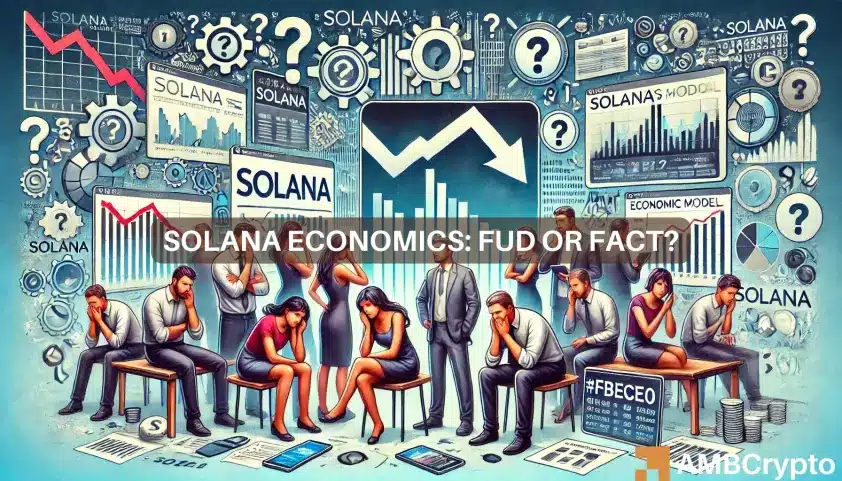Solana’s token [SOL] experienced a 2.21% decline in the past 24 hours despite the overall upswing in the cryptocurrency market. Its total market capitalization rose to $2.07 trillion after a 0.65% increase.
Nevertheless, there have been emerging concerns regarding SOL’s economic structure.
Evaluating Solana’s Economic Framework
There has been a discussion circulating that draws parallels between Solana and Terra Luna, a blockchain project that faced challenges in 2022.
Addressing these comparisons, Cyber Capital’s founder and CIO, Justin Bons, has refuted the claims as overstated and baseless.
To counteract the spreading rumors and uncertainties, Bons commented,
“Solana’s economic model is robust. With a sustained inflation rate of 1.5% coupled with a 50% burning rate of the base fee, it is well-balanced. The apprehensions surrounding SOL’s economic aspects are simply FUD!”
A Deeper Look
Bons clarified that SOL’s economic structure is conventional and aligns with the core principles of leading blockchains such as Bitcoin [BTC] and Ethereum [ETH].
He emphasized that many blockchains, including SOL, experience a phase of higher inflation during their initial stages, which gradually tapers off over time—a deliberate strategy seen in numerous cryptocurrencies.
Bons highlighted the resemblance of Solana’s economic framework to Ethereum’s post EIP-1559 upgrade, which implemented measures to regulate inflation through fee burning.
Comparing Solana with Terra Luna
In Bons’ view, Solana’s tokenomics are solid and not akin to the collapse witnessed in Terra Luna’s case.
He elaborated,
“The primary distinction lies in SOL’s scalability compared to ETH’s limitations. Based on my analysis, in the long term, a scalable chain with nominal fees is poised to generate significantly more fee income.”
Regarding the concerns around SOL token distribution, Bons indicated that Solana’s upcoming token releases are more advantageous compared to other emerging blockchains like Aptos [APT], Sui [SUI], and Sei [SEI].
He remarked,
“The anticipated unlockings for these chains heavily favor insiders in contrast to SOL’s distribution. Hence, the negative narrative surrounding SOL does not align with the present reality.”
He concluded by reinforcing his stance with the statement,
“SOL boasts an exemplary economic model, and disregarding this fact is being blind to reality!”
Understanding SOL’s Price Movements
Despite these uncertainties, Solana’s price action has been lackluster, evident from the Relative Strength Index (RSI) remaining below the neutral threshold, indicating a bearish trajectory.
Conversely, the Moving Average Convergence Divergence (MACD) portrays a slightly different outlook, with the MACD line positioned above the signal line, signaling lingering bullish momentum and providing a glimmer of hope for a potential recovery.

